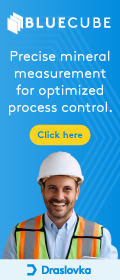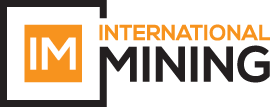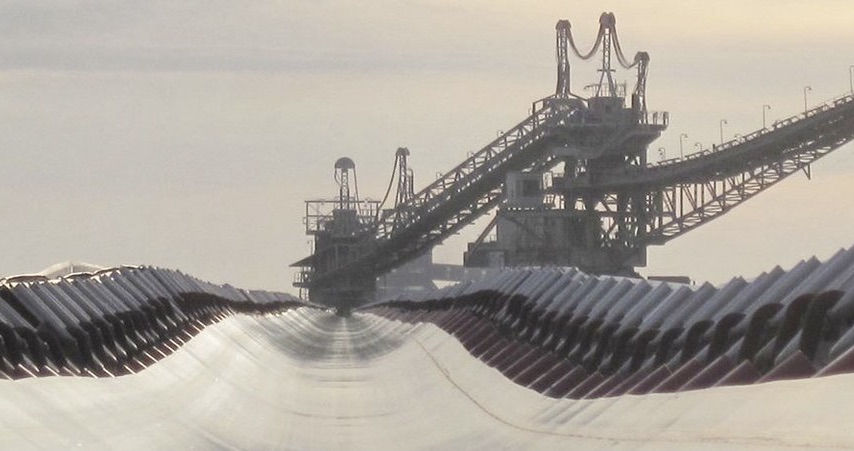At the recent Future Minerals Forum in Riyadh, Saudi Arabia, IM Editorial Director Paul Moore caught up with TAKRAF Group CEO Thomas Jabs on the potential growth in that country plus TAKRAF Group’s value proposition in today’s mining market.
Mining, materials handling and minerals processing systems major TAKRAF Group has had some high-profile contract wins in the past 18 months including with SNIM, Rio Tinto and Collahuasi. For SNIM in Mauritania, the contract covers the supply of a complete iron ore crushing, screening, and material handling system, along with a train loading station for the F’Derick project. This followed the signing of a contract with Rio Tinto in November 2023 for an integrated in-pit crushing and conveying (IPCC) service for the Simandou iron ore complex in Guinea. Most recently, it has secured a major contract to design and supply a conveying system for Compañía Minera Doña Inés de Collahuasi SCM’s Ujina growth project, in Chile. The contract will see TAKRAF engineer and supply the conveying system (CV-8001, CV-8002 and CV-8003) for the project, which has a key objective to increase the capacity of the concentrator plant.
IM Editorial Director Paul Moore with TAKRAF CEO Thomas Jabs at the Future Minerals Forum
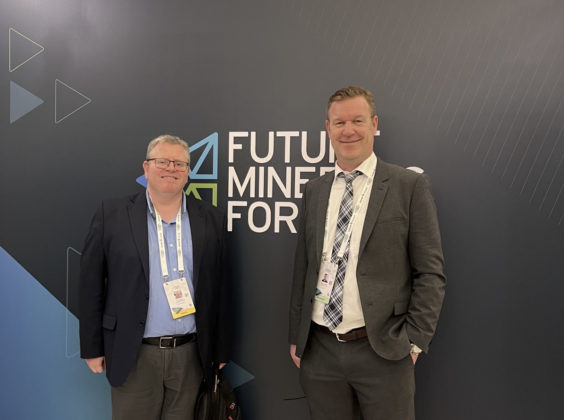
Q Where does TAKRAF see the potential for materials handling business growth in Saudi Arabia?
Clearly the phosphate industry in Saudi Arabia, and to some extent gold and bauxite, are primarily where you already have tangible materials handling and conveying, as well as processing projects. Ma’aden is an existing customer of ours in phosphate for example – and in the region we have customers in adjacent countries including the UAE and Oman. But the Future Minerals Forum is indicative of the huge potential in the future and the desire for fast paced development of large mining operations, where conveying and IPCC solutions will have their place – though it will still take time for the exploration results to filter through into advanced projects.
Q Your offering covers pit to port, are there opportunities across this value chain in the country? How are you approaching the Saudi market?
The two brands that we have under TAKRAF Group – namely TAKRAF and DELKOR – do offer a wide range of solutions, and both are already present in Saudi Arabia in the phosphate sector. We can offer on the DELKOR side filtration, flotation, thickening and other mineral processing options, and from TAKRAF we have soft rock mining, such as with bucket-wheel excavators, plus HPGRs and sizers, feeding, conveying (ore and waste), waste handling including spreaders, leach pad or stockpile stacking/reclaiming and mineral port storage and ship loading. All of these will have relevance as Saudi’s mining industry grows. However, there is also a major potential market for equipment to handle minerals like iron ore being imported into Saudi Arabia for consumption in the steel and other industries – including the potential future use of DRI for electric arc furnace plants. Vale has announced it is building a green steel mega-hub in Ras Al Khair, for example. In addition, we are a leading supplier of stockyard and other equipment to the cement sector. Today we are building relationships with existing and potential customers and getting used to doing business in Saudi Arabia so that we are in a good position when some larger mining investments will come. We also see that a lot of energy intensive steps in smelting as well as comminution and processing will potentially relocate to Saudi from other countries due to access to cheap energy, much of which is coming from natural gas fired plants, but the country is also pushing towards 50% renewable energy by 2030, with solar being quite an obvious option.
TAKRAF recently secured a major contract to design and supply a conveying system for Collahuasi SCM’s Ujina growth project in Chile
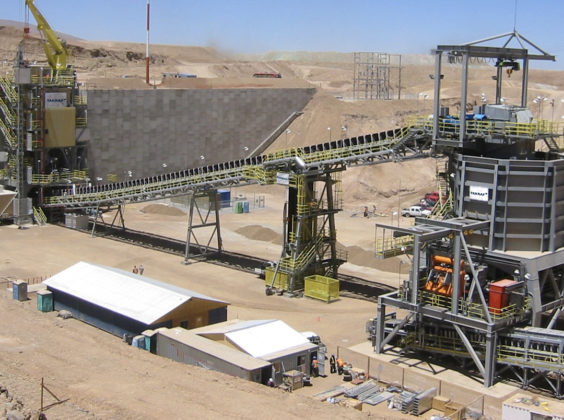
Q Looking at large scale mine conveying, some other major players have or will be exiting the market – while TAKRAF has announced some high-profile contracts in recent months. What has contributed to your ability to lock in these major projects?
I think there are multiple reasons – when it comes to materials handling we are a full line supplier from primary crushing right through to the export terminal and ship loader. Simandou for example includes primary and secondary IPCC systems and stacking & reclaiming at the train load out area plus the wagon loading systems. I also think it is about customer confidence in us. By that I mean the way we treat and manage projects from the outset, including at the study phase, works in our favour as it creates confidence early on that we are the right partner. That includes us being able to provide advice on a range of aspects – such as where is the best position for an in-pit crusher, whether redundancy in conveyors is needed, plus selection of the right powertrain and the right conveyor speed. We conduct all our basic engineering in-house and we don’t outsource any of that, plus we retain a mine planning department to help map out how a material handling system will evolve as the mine develops – this is all based in our dedicated TAKRAF Mining Technology Center (TMTC). On the crushers we also bring options – we can supply our own sizers, from standard class to our TAKRAF X-TREME Class machines and HPGRs – and we are supplying the former for Simandou. For primary gyratories and secondary cones we can bring a partner in – which is what we did for the SNIM F’Derick project. In most cases there will always be a cheaper option, but it’s a question of whom you trust for such as major and long-term investment. In terms of suppliers, if you look back on the past 20 years or so, three or four main established players accounted for the majority of the materials handling market, with the choices sometimes coming down to regional strengths in presence and fabrication capabilities and in some cases EPCM preferences. Today there have been major exits from the market by major players as you say – and TAKRAF as a result now has an important position of being a major and well-established materials handling system supplier to the mining industry, in which we remain in the market and committed to that market too. Yes, competition from new entrants as well as Chinese suppliers is growing – so we will continue to bring our value proposition, from early-stage design – and being able to give options and the pros and cons of each – right through to commissioning and support when in use. Once you deliver a system, you need to make sure it performs as planned, which may include adjustments and tweaks to get it right.
Q Are sizers playing an increasingly important role and are they able to handle harder materials?
We have pushed the envelope with our sizers quite a lot – I would say that what is possible to crush with our designs, especially our TAKRAF X-TREME Class Sizers is much higher than many expected. Part of this has been driven by our deep understanding of wear behaviour, including being able to supply our WolfRAM armour solution, which is a very robust tungsten carbide overlay, for handling harder materials. This tooth hardening approach combined with optimised tooth configurations and high torque drivetrains I would say are standout features for our sizer offering in mining, not to mention some of the clever maintenance solutions we have also developed. And I think that these factors have been a major factor in our success in the Alberta oil sands, for example.
Q How important is greener mining and the move to electrification in mines, especially in hard rock, taking a closer look at conveying and IPCC options whether to replace diesel truck fleets or at least reduce their size?
I think we turned a corner about two years ago. When the mining houses now start thinking about new investments, they look at reducing carbon emissions in terms of bulk ore and waste transportation. IPCC for a very long time was seen as a nice idea in hard rock mining but a niche option, with trucks often winning over other options due to flexibility. Of course there have been some exceptions, Chile being a good example. Today however, at the prefeasibility and feasibility stages, everyone is looking at how to cut truck routes and truck fleets, with IPCC almost always part of the investigative process – especially when it comes to strategically placing in-pit crushers or near-pit crushers. What is surprising to me, however, is the huge investment that is still being put into decarbonising and electrifying trucks – when greener material handling options exist. Trucks are still using tyres and truck haulage still consumes water for dedusting for example. Plus, you are still wasting energy in the form of additional mining when building, maintaining and altering truck routes over time. And trucks will always return empty, regardless with which energy they run. Using green energy does not mean that you can waste it. That said, trucks can be leased and contractors can be used whereas conveyors are always going to represent a significant CAPEX outlay. But I would like to see more focus on the efficiency that large scale conveying in conjunction with trucking can bring – something proven in Chilean copper for many decades. And the potential for downhill conveyors to actually generate power. So, if the same investment was put into materials handling system considerations as is being put into electric trucks, I think the industry would achieve a lot of results. Yes, in many hard rock mines, there will more often than not be areas where you want the flexibility of trucks – but many teams involved in mine design are still using the truck and shovel model as a standard baseline – and not factoring in conveyors for the parts of the operation where they would be the more efficient and greener option. This just means it is harder to bring in conveyors later because the mine has not been set up for them. At the end of the day, mining is about logistics – how do I get the material from A to B in the cheapest and most efficient way over the life of the mine using the least amount of energy and emitting the least carbon. And the conveyor will often be the best option, but it has to be factored in from the outset.
Q And what of the greater focus on leaching in mining as well as dry stacked filtered tailings from the standpoint of conveyor system demand?
In leach pad stacking/reclaiming and conveying including mobile stacking bridges we are already well experienced with many references. On tailings, we are in the advanced development phase of offering the market a new range of solutions for dry stacked tailings – and we just signed an agreement related to larger automated filter presses related to this. Everything downstream and some of the upstream from that we have in our portfolio anyway, we just have to design and position the right solutions for this specific market. You have to remember though that everyone still wants to handle waste in the most cost effective way – there is still a reluctance to invest in waste. The traditional wet tailings dam remains the lowest cost option but is also environmentally the most challenging and unsafe too. More and more jurisdictions are implementing new regulations based on the Global Industry Standard on Tailings Management; plus mining groups are aligning their own approach on that. And now more recently the Global Tailings Management Institute has been set up. All this means the demand for large dry stacked tailings systems is indeed set to increase significantly and we at TAKRAF Group are prepared for that and we have all the technology in house – including high-density thickeners and paste thickeners from our DELKOR product brand, as well as belt filters and filter presses and of course TAKRAF equipment for the material handling and disposal. We have a current project, where we are looking at stacking relatively wet tailings and for that we have conducted a live test in Australia with the client. But every tailings project is different, and the tailings themselves are unique to every mine and that means they behave differently on conveyors for example – plus the available topographies and areas for disposal vary for every mine. These, and others, are some of the things that are we investigating in terms of best practice when it comes to tailings project design and implementation. That means also using the right thickening and filtration combination to achieve the optimum moisture content for the tailings transport and disposal method selected.




